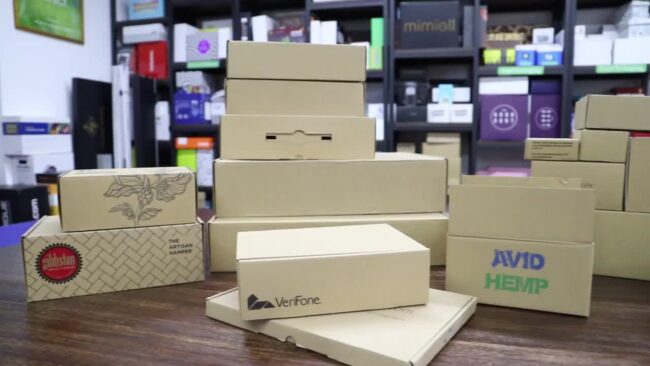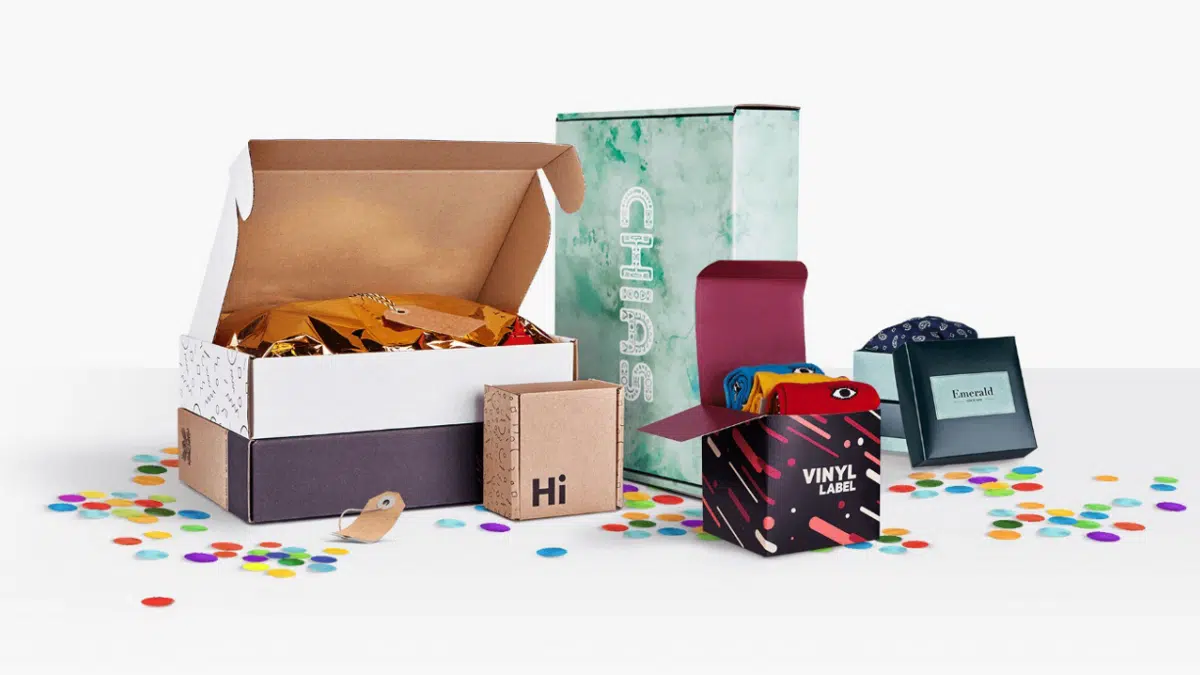Boxed packaged goods are an indispensable part of modern commerce, serving not only as protective containers but also as powerful marketing tools. Wh
Boxed packaged goods are an indispensable part of modern commerce, serving not only as protective containers but also as powerful marketing tools. Whether you’re picking up a box of cereal, an electronic device, or a set of cosmetics, the packaging often plays a key role in your buying decision. This article explores the critical functions of boxed packaged goods, their materials, design strategies, industry applications, and future trends shaping the packaging landscape.
What Are Boxed Packaged Goods?
Boxed packaged goods are products contained within boxes made from materials such as cardboard, corrugated fiberboard, or paperboard. These boxes protect the product, make transportation easier, and enhance presentation on retail shelves.
Unlike flexible packaging like bags or pouches, boxed packaging provides a rigid or semi-rigid shell that can be easily stacked and handled, offering superior protection and branding opportunities.
Why Are Boxed Packaged Goods Important?
Protection and Durability
Boxed packaging shields products from damage caused by impact, moisture, dust, and light. For fragile or perishable products, this protection is essential to maintain quality until the product reaches the consumer.
Marketing and Consumer Engagement
Packaging is often the first touchpoint between a consumer and a product. A well-designed box attracts attention, communicates brand values, and encourages purchase.
Product Information
Boxes provide ample space to display important product details such as ingredients, usage instructions, safety warnings, and certifications, ensuring transparency and compliance with regulations.
Convenience and Usability
Boxes often come with user-friendly features like easy-open tabs, resealable closures, and carrying handles, enhancing the customer experience.
Environmental Considerations
With rising awareness about sustainability, many companies now prioritize eco-friendly boxed packaging made from recycled or biodegradable materials.
More about: Boxed packaged goods
Materials Commonly Used for Boxed Packaged Goods
Cardboard
Lightweight and easy to print on, cardboard is often used for dry goods, cosmetics, and pharmaceuticals.
Corrugated Fiberboard
Strong and durable, corrugated fiberboard is preferred for heavier items like electronics and fragile goods. Its fluted inner layer offers cushioning.
Paperboard
Used for lightweight products, paperboard can be folded into boxes with smooth surfaces ideal for high-quality printing.
Plastic Laminated or Coated Boxes
These offer moisture resistance and durability, commonly used in food packaging to extend shelf life.

Designing Effective Boxed Packaging
Structural Design
The box must fit the product securely to prevent movement during transport. Protective inserts or partitions may be added for additional safety.
Aesthetics and Branding
Visual elements such as color, typography, imagery, and finishes (glossy, matte, embossed) help the product stand out on shelves and convey brand identity.
Functional Features
Incorporating handles, tear strips, windows, or resealable flaps can make the packaging more convenient and attractive.
Compliance and Labeling
Boxes must include mandatory information and comply with industry-specific regulations, especially for food, drugs, and hazardous materials.
Industry Applications
Food and Beverage
From breakfast cereals to frozen meals, boxed packaging protects freshness and communicates nutritional information.
Electronics
Packaging safeguards delicate components and prevents theft, often including foam inserts.
Pharmaceuticals
Boxes maintain hygiene, protect products, and provide dosage and safety information.
Cosmetics
Luxury packaging enhances the perceived value of beauty products and ensures product integrity.
Toys and Games
Boxes offer colorful designs and important safety info, appealing to children and parents alike.
Emerging Trends in Boxed Packaging
Eco-Friendly Packaging
Sustainable materials, minimal packaging, and recyclable designs are increasingly popular in response to environmental concerns.
Smart Packaging
Technologies such as QR codes, NFC, and augmented reality add interactivity and improve customer engagement.
Minimalist Designs
Clean, simple packaging with clear messaging appeals to modern consumers seeking authenticity.
Personalization
Customized and limited-edition packaging fosters stronger connections with consumers.
Benefits of Boxed Packaged Goods
- Product Protection: Prevents damage and preserves quality.
- Brand Differentiation: Helps products stand out in crowded markets.
- Consumer Convenience: Facilitates handling, storage, and use.
- Regulatory Compliance: Ensures safety and legal adherence.
- Sustainability Potential: Can reduce environmental impact when designed thoughtfully.
Challenges Facing Boxed Packaging
- Cost: High-quality or custom packaging can be expensive.
- Environmental Impact: Packaging waste and resource use remain concerns.
- Complex Supply Chains: Varying regulations and sourcing challenges exist.
- Balancing Aesthetics and Function: Packaging must appeal visually while serving practical needs.
Conclusion
Boxed packaged goods are much more than mere containers; they protect, promote, inform, and enhance user experience. As consumer preferences shift toward sustainability and technology integration, packaging will continue to evolve, driving innovation in materials and design. Businesses that invest in smart, eco-friendly, and attractive boxed packaging stand to gain customer trust and competitive advantage.
FAQs About Boxed Packaged Goods
Q1: What defines boxed packaged goods?
Products sold enclosed in boxes, primarily made of paper-based materials, offering protection and marketing space.
Q2: How do boxed packages protect products?
By providing a rigid or semi-rigid shell that prevents damage from impact, moisture, and contaminants.
Q3: Are boxed packages recyclable?
Most cardboard and paperboard boxes are recyclable; however, plastic-coated boxes may require special handling.
Q4: Can boxed packaging be customized?
Yes, including size, shape, color, printing, and added features like windows or handles.
Q5: What materials are commonly used for boxed packaging?
Cardboard, corrugated fiberboard, paperboard, and sometimes plastic laminates.
Q6: How does boxed packaging influence consumer behavior?
Attractive packaging draws attention, communicates value, and can influence purchase decisions.
Q7: What sustainability practices are used in boxed packaging?
Use of recycled materials, biodegradable fibers, minimal packaging, and recyclable inks and adhesives.
Q8: Which industries rely heavily on boxed packaging?
Food and beverage, electronics, pharmaceuticals, cosmetics, toys, and more.
Q9: What challenges exist in boxed packaging design?
Balancing cost, durability, aesthetics, environmental impact, and regulatory compliance.
Q10: What are some future trends in boxed packaging?
Sustainability, smart packaging technologies, personalization, and minimalist design.
Must Visit: quickcashhub

COMMENTS